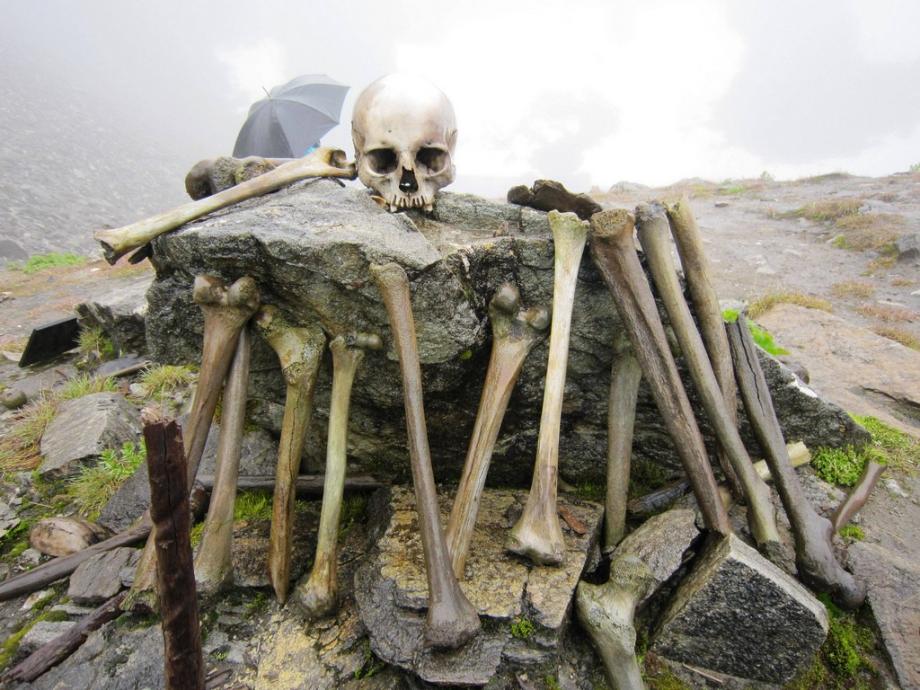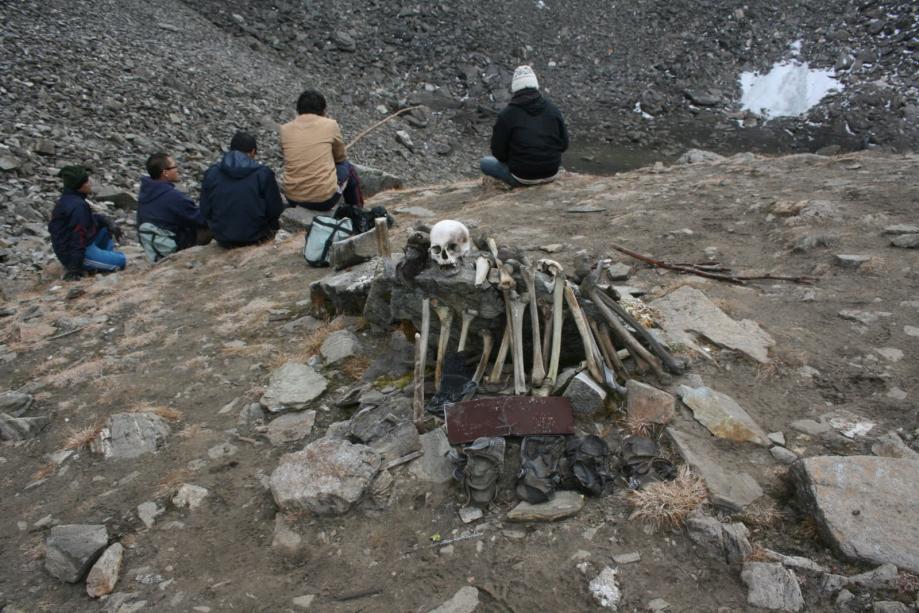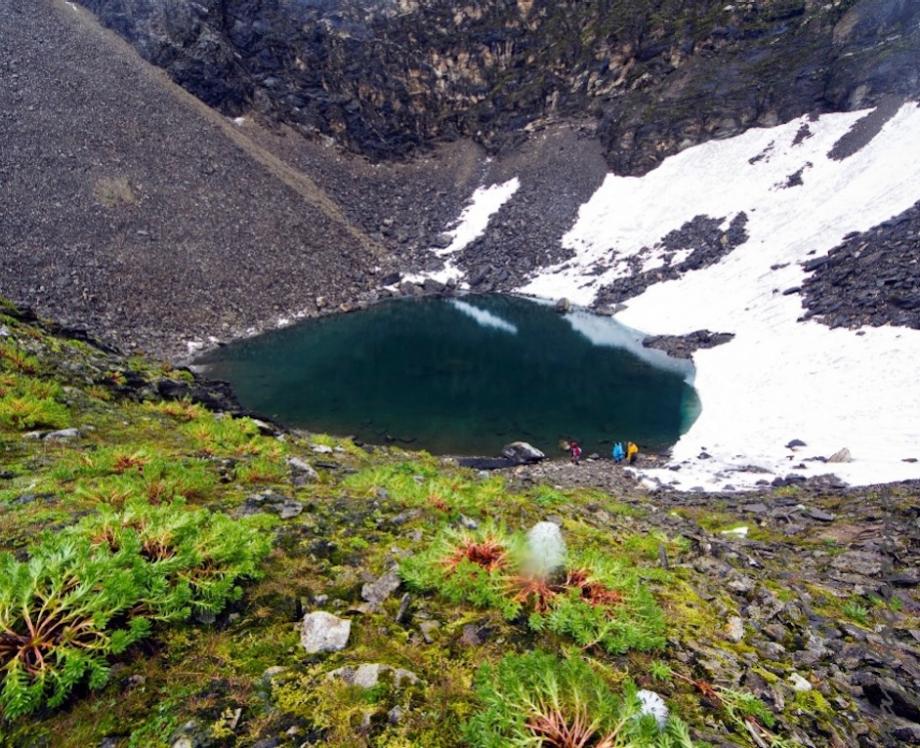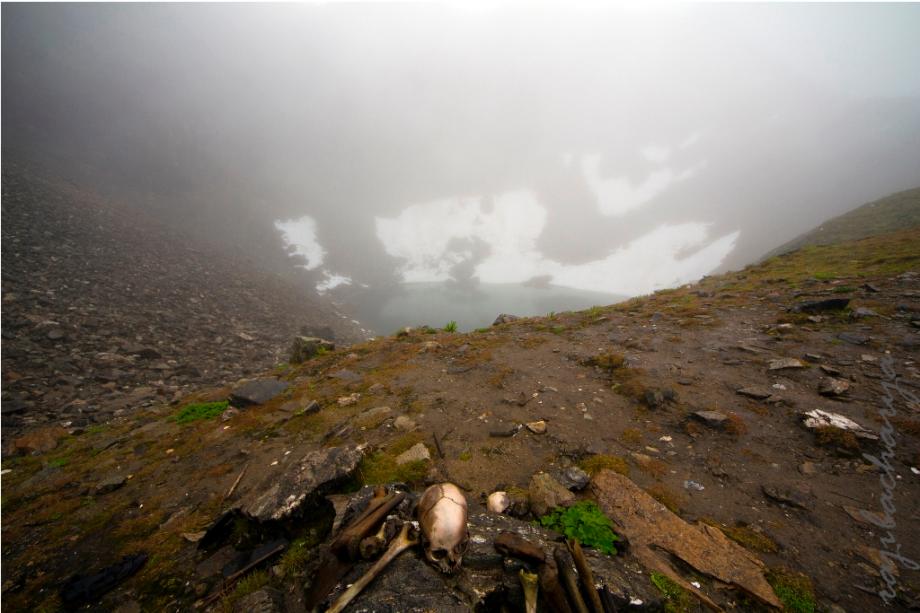Skeleton Lake of Roopkund, India. The Surprise Is What Killed Them …

Atlas Obscura on Slate is a new travel blog. Like us on Facebook, Tumblr, or follow us on Twitter @atlasobscura
In 1942 a British forest guard in Roopkund, India, made an alarming discovery. More than three miles above sea level, he stumbled across a frozen lake surrounded by hundreds of human skeletons. That summer, the melting ice revealed even more remains, floating in the water and lying haphazardly around the lake's edges.
Since this was the height of World War II, there were fears that the skeletons might belong to Japanese soldiers who had died of exposure while sneaking through India. The British government, terrified of a Japanese land invasion, sent a team of investigators to determine whether this was true. Upon examination they realized these bones weren't Japanese soldiers at all, but of a much much older vintage. But what killed them? Many theories were put forth, including an epidemic, landslide, and ritual suicide. For six decades, no one was able to shed light on the mystery of "Skeleton Lake."
In 2004 a scientific expedition offered the first plausible explanation of the mysterious deaths. The answer was stranger than anyone had guessed.
All of the bodies were dated to about 850 AD. DNA evidence indicated that there were two distinct groups of people killed near the lake: one a family or tribe of closely related individuals, and a second, shorter group. Rings, spears, leather shoes, and bamboo staves were found, leading experts to believe that the group was comprised of pilgrims heading through the valley with the help of local porters.
Analysis of skulls showed that, no matter their stature or position, all of the people died in a similar way: from blows to the head. However, the short, deep cracks in the skulls appeared to be the result not of weapons but of something round. The bodies had wounds only on their heads and shoulders, indicating the blows came from directly above. The scientists reached an unexpected conclusion: The hundreds of travelers all died from a sudden and severe freak hailstorm.
Hail is rarely lethal. But trapped in a valley without shelter, the 9th-century travelers could not escape the sudden barrage of rock-hard, cricket-ball-size spheres of ice. Twelve hundred years after the storm, the green-tinged bones of the hail victims still ring the lake, preserved alongside their tattered shoes
More photos of Skeleton Lake can be seen on Atlas Obscua.
Unusual distasters:



